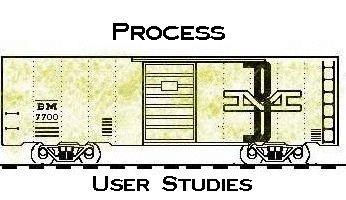
 User Studies: Site Visit to Castilleja School
User Studies: Site Visit to Castilleja School
Background
Methodology
Limitations
Results
Background
In order to best design for a collaborative work environment, it is vital to observe that very environment. I chose to visit The Castilleja School in Palo Alto, California for two reasons. First, I could observe classrooms and teachers at work. Second, I could easily secure permission for such a visit through Robin Klein, a colleague who is working as an intern as Castilleja.
Methodology
I planned to focus on how whiteboards were used by teachers in a variety of classrooms. To gather a general idea of use and to limit the interruptions to the teaching happening on the day of my visit, I planned to examine classrooms while students were at lunch. I also focused on the facilities available in each classroom as well as the information and method of conveyance used by different teachers. I also kept my eyes open to observe teacher collaboration or teacher professional development in action.
Limitations
Castilleja is an independent girls' school and therefore may not be representative in some ways such as teaching methods and available facilities. Additionally, observations were made between class periods. This could mean that some of the whiteboards which were observed to be blank were merely erased between classes and would be filled up during the next class period.
Results
use of board for instruction - could beam it to pc's in a lab setting?
"Any use of information technologies deemed wasteful of school resources" - code of conduct
no phones in classrooms, yet phone # of tech support on wall in lab
teachers want a system that won't go down
s/b inter-faceable with graphing calculator, vcr
most use multiple colors
many use color to distinguish types of info - e.g. black for homework, red for announcements
observed two coteachers collaborating during a conference period using a single pc to modify lesson plans
between classes - what if they were not in the same location physically?
presentation device with TV - hard to see due to glare, no window shade
all rooms have at least one whiteboard (most have 2)
homework assignments listed on board
writing in one color - left up between classes b/c will use it again
board is decorated
"save"
things standing up in tray, leaning against board
handout posted on board - taped in the center and referenced on sides in marker
magnets on board - decorative and potentially functional
"do not erase"
situated vertically rather than horizontally
2 art rooms - layered multiple boards horizontally and vertically
13 classrooms were visited during lunchtime
5 had blank whiteboards
8 used boards to communicate with kids or for kids to use for work or play
types of information on boards: homework, announcements, reference materials, messages to individuals
4 boards were divided into sections: I with masking tape, 3 with lines drawn in marker
1 board was situated vertically, all others were horizontal
6 were decorated with something other than markers - posters, maps, items in chalk tray, magnets
2 had areas marked as "save" or "do not erase"
permissive feeling for kids to write on board in certain rooms
color used to divide content
no telephones in classrooms
all rooms have pc's with internet connections
a few rooms had wheeled in a TV w/vcr or a TV as computer presentation station
would like to use with students to interface with graphing calculators and vcrs
intercom system in each classroom is unidirectional and is rarely used

Design of a Real Time Network for Teacher Collaboration
© 1999 Courtney S. Glazer


